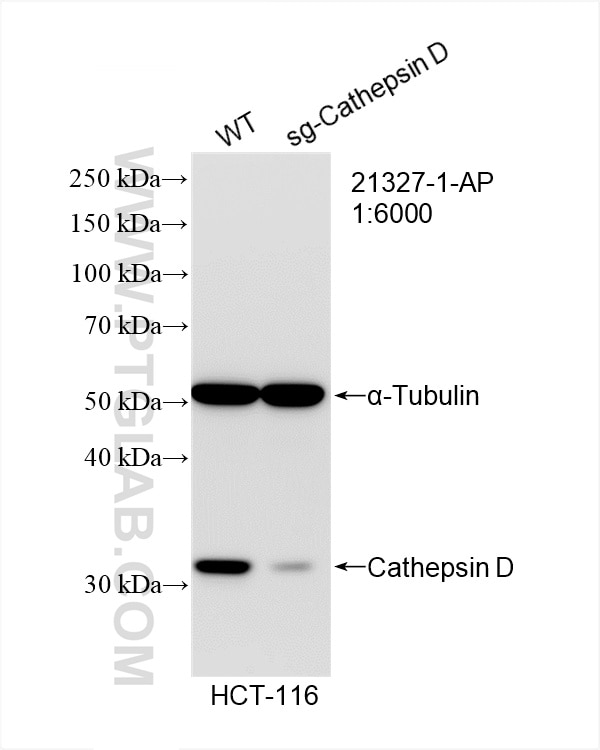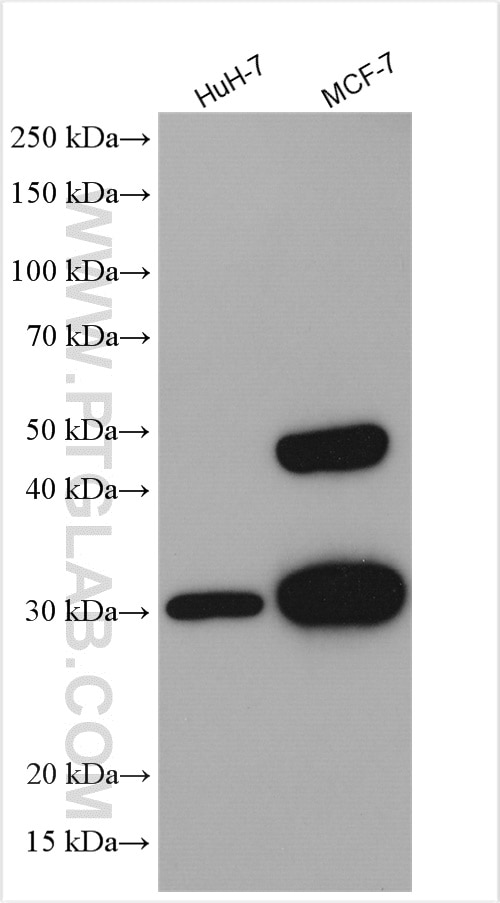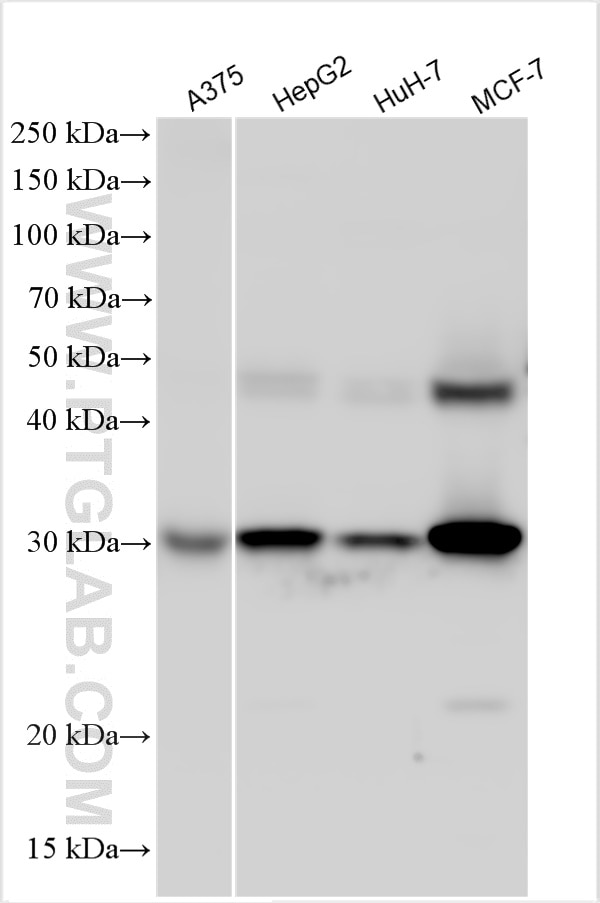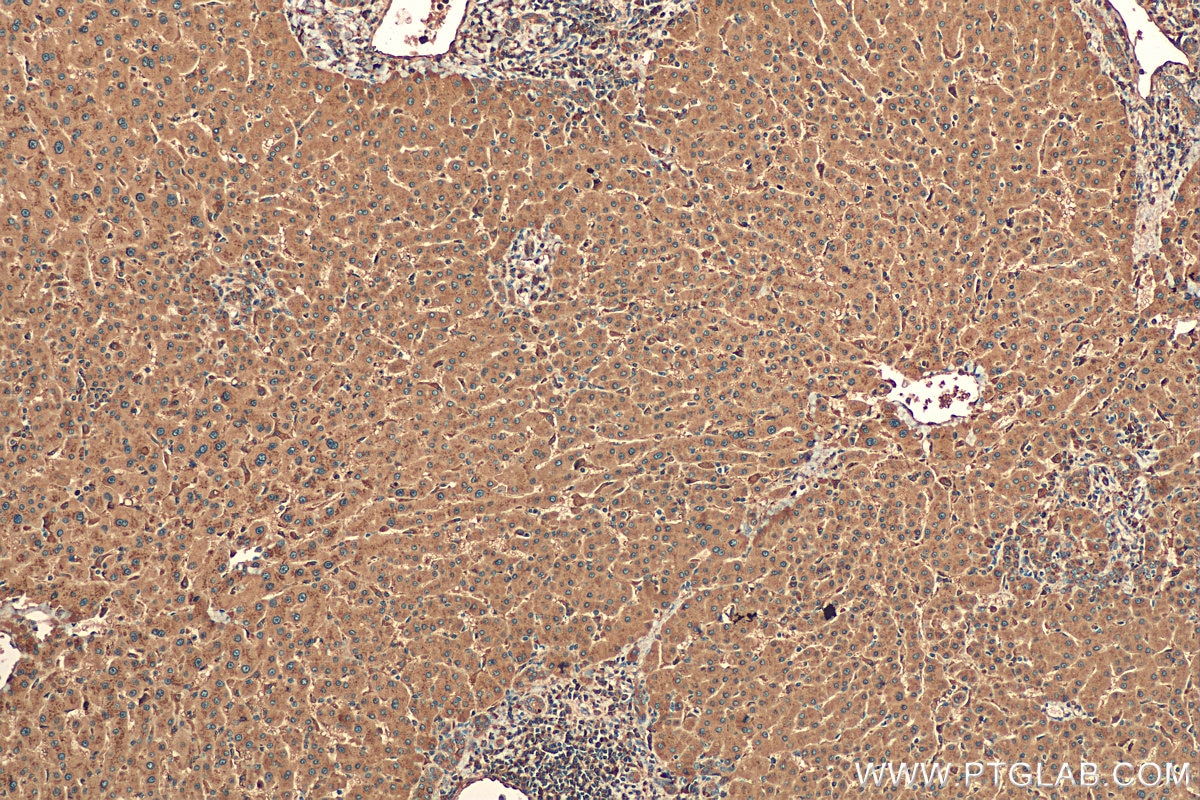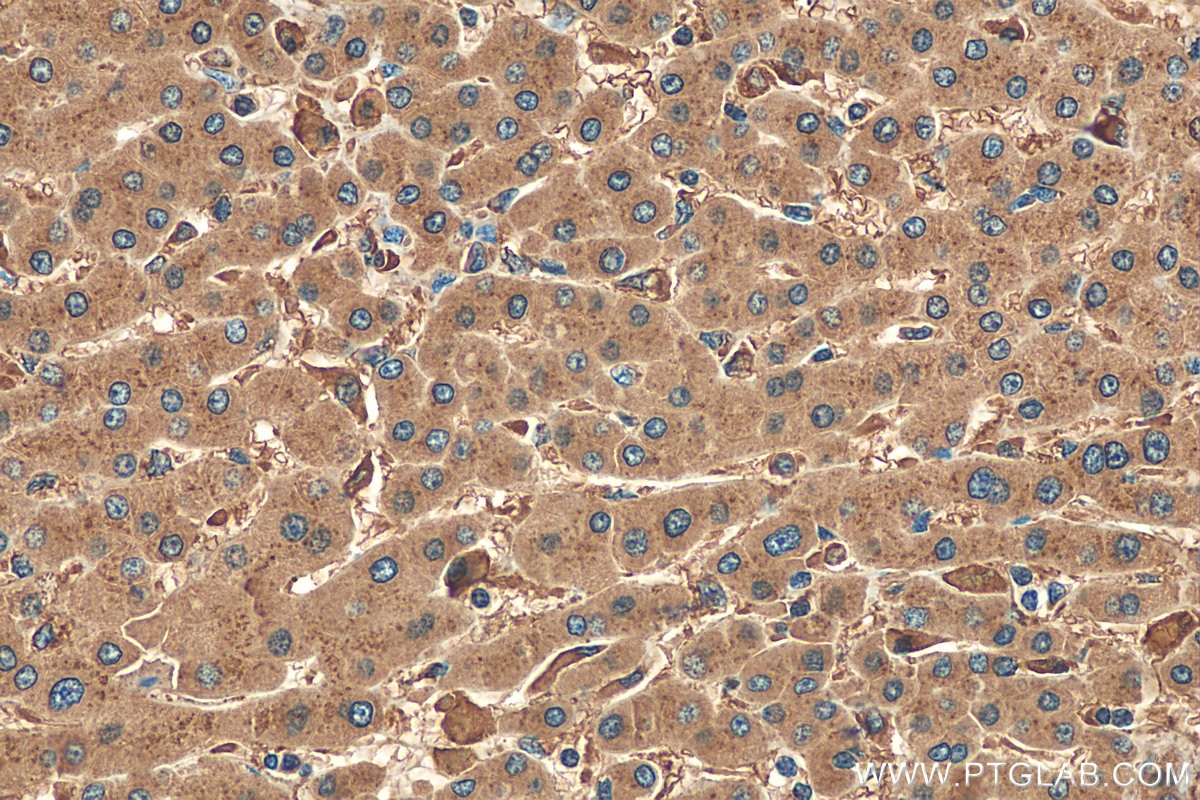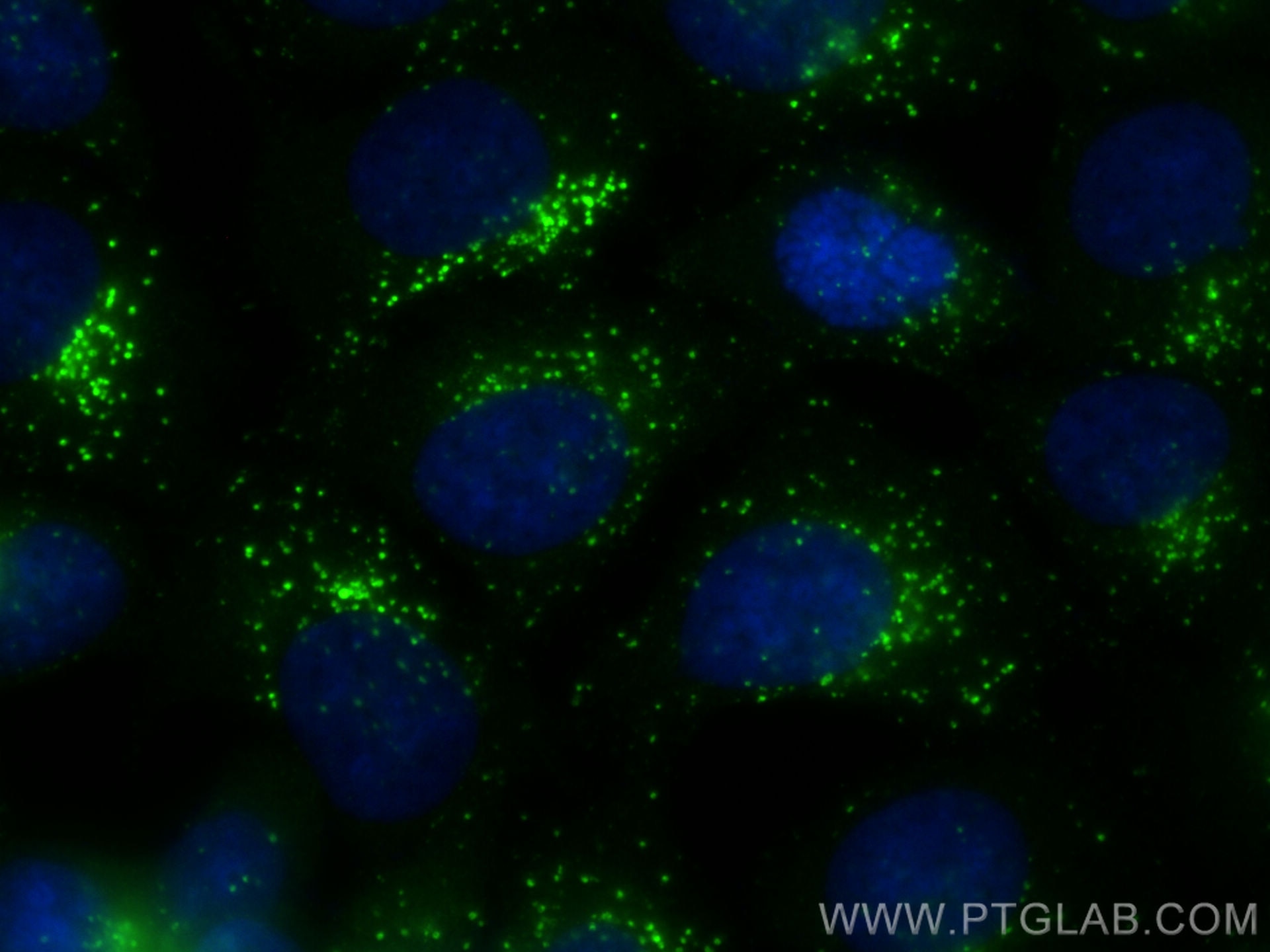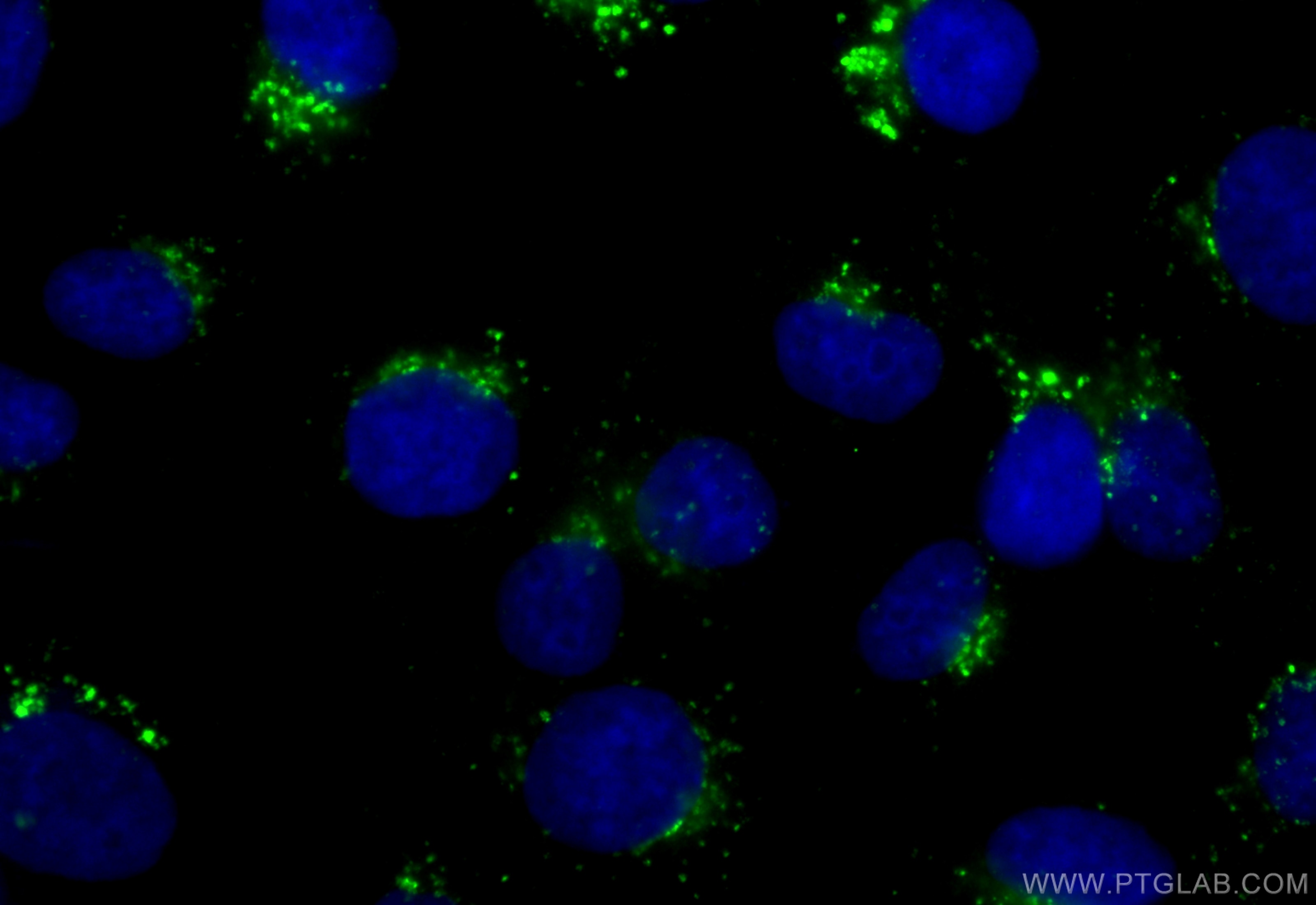Tested Applications
| Positive WB detected in | A375 cells, HCT 116 cells, HuH-7 cells, HepG2 cells, MCF-7 cells |
| Positive IHC detected in | human hepatocirrhosis tissue Note: suggested antigen retrieval with TE buffer pH 9.0; (*) Alternatively, antigen retrieval may be performed with citrate buffer pH 6.0 |
| Positive IF/ICC detected in | MCF-7 cells, A431 cells |
Recommended dilution
| Application | Dilution |
|---|---|
| Western Blot (WB) | WB : 1:5000-1:50000 |
| Immunohistochemistry (IHC) | IHC : 1:500-1:2000 |
| Immunofluorescence (IF)/ICC | IF/ICC : 1:200-1:800 |
| It is recommended that this reagent should be titrated in each testing system to obtain optimal results. | |
| Sample-dependent, Check data in validation data gallery. | |
Published Applications
| KD/KO | See 1 publications below |
| WB | See 126 publications below |
| IHC | See 16 publications below |
| IF | See 23 publications below |
Product Information
21327-1-AP targets Cathepsin D in WB, IHC, IF/ICC, ELISA applications and shows reactivity with human, mouse samples.
| Tested Reactivity | human, mouse |
| Cited Reactivity | human, mouse, rat, pig, bovine |
| Host / Isotype | Rabbit / IgG |
| Class | Polyclonal |
| Type | Antibody |
| Immunogen |
CatNo: Ag15254 Product name: Recombinant human Cathepsin D protein Source: e coli.-derived, PET28a Tag: 6*His Domain: 59-412 aa of BC016320 Sequence: VPAVTEGPIPEVLKNYMDAQYYGEIGIGTPPQCFTVVFDTGSSNLWVPSIHCKLLDIACWIHHKYNSDKSSTYVKNGTSFDIHYGSGSLSGYLSQDTVSVPCQSASSASALGGVKVERQVFGEATKQPGITFIAAKFDGILGMAYPRISVNNVLPVFDNLMQQKLVDQNIFSFYLSRDPDAQPGGELMLGGTDSKYYKGSLSYLNVTRKAYWQVHLDQVEVASGLTLCKEGCEAIVDTGTSLMVGPVDEVRELQKAIGAVPLIQGEYMIPCEKVSTLPAITLKLGGKGYKLSPEDYTLKVSQAGKTLCLSGFMGMDIPPPSGPLWILGDVFIGRYYTVFDRDNNRVGFAEAARL Predict reactive species |
| Full Name | cathepsin D |
| Calculated Molecular Weight | 412 aa, 45 kDa |
| Observed Molecular Weight | 32 kDa, 48 kDa, 52 kDa |
| GenBank Accession Number | BC016320 |
| Gene Symbol | Cathepsin D |
| Gene ID (NCBI) | 1509 |
| RRID | AB_10733646 |
| Conjugate | Unconjugated |
| Form | Liquid |
| Purification Method | Antigen affinity purification |
| UNIPROT ID | P07339 |
| Storage Buffer | PBS with 0.02% sodium azide and 50% glycerol, pH 7.3. |
| Storage Conditions | Store at -20°C. Stable for one year after shipment. Aliquoting is unnecessary for -20oC storage. 20ul sizes contain 0.1% BSA. |
Background Information
CTSD (Cathepsin D) also named CPSD, belongs to the peptidase A1 family. It is ubiquitously expressed and is involved in proteolytic degradation, cell invasion, and apoptosis. Human CTSD is synthesized as a 52-kDa precursor that is converted into an active 48-kDa single-chain intermediate in the endosomes, and then into a fully active mature form, composed of a 34-kDa heavy chain and a 14-kDa light chain, in the lysosomes. It is a lysosomal acid protease found in neutrophils and monocytes and involved in the pathogenesis of several diseases such as breast cancer and possibly Alzheimer disease (PMID: 27114232, PMID: 30717773, PMID: 30051532).
Protocols
| Product Specific Protocols | |
|---|---|
| IF protocol for Cathepsin D antibody 21327-1-AP | Download protocol |
| IHC protocol for Cathepsin D antibody 21327-1-AP | Download protocol |
| WB protocol for Cathepsin D antibody 21327-1-AP | Download protocol |
| Standard Protocols | |
|---|---|
| Click here to view our Standard Protocols |
Publications
| Species | Application | Title |
|---|---|---|
Acta Pharm Sin B Nuciferine protects against high-fat diet-induced hepatic steatosis and insulin resistance via activating TFEB-mediated autophagy-lysosomal pathway. | ||
Autophagy Atractylenolide I inhibits angiogenesis and reverses sunitinib resistance in clear cell renal cell carcinoma through ATP6V0D2-mediated autophagic degradation of EPAS1/HIF2α | ||
Redox Biol Cyclic helix B peptide alleviates proinflammatory cell death and improves functional recovery after traumatic spinal cord injury | ||
Autophagy Restoration of CTSD (cathepsin D) and lysosomal function in stroke is neuroprotective.
|
Reviews
The reviews below have been submitted by verified Proteintech customers who received an incentive for providing their feedback.
FH Tae Yeon (Verified Customer) (09-02-2025) | Good puncta staining to detect lysosomal enzyme
|
FH aude (Verified Customer) (05-26-2025) | Sat 5% milk Incubation Primary Ab ON at 4°C
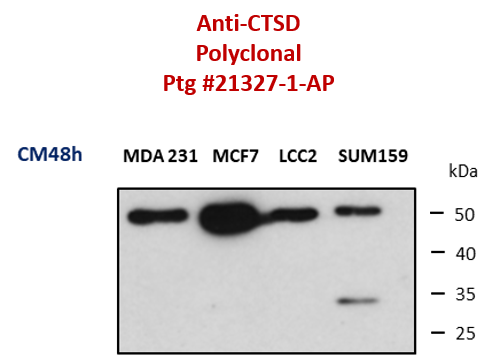 |
FH Chen (Verified Customer) (06-01-2021) | Very good to detect cathepsin D in postmortem human samples with Western blotting
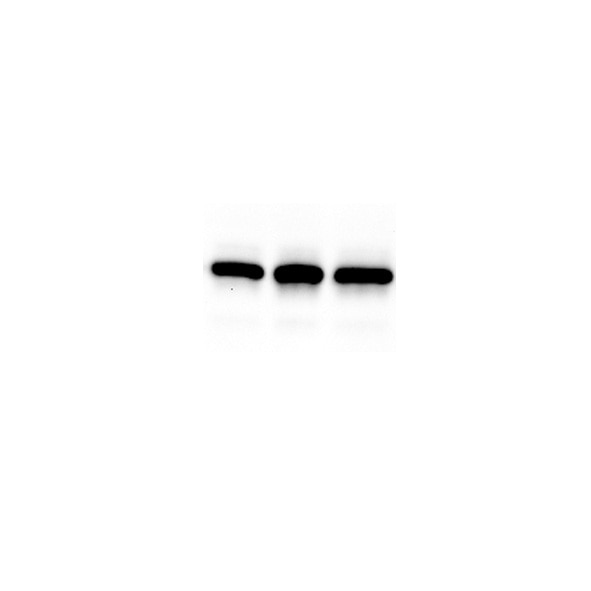 |
FH Efil (Verified Customer) (05-29-2019) | cells were fixed in cold MeOH for 8 minutes
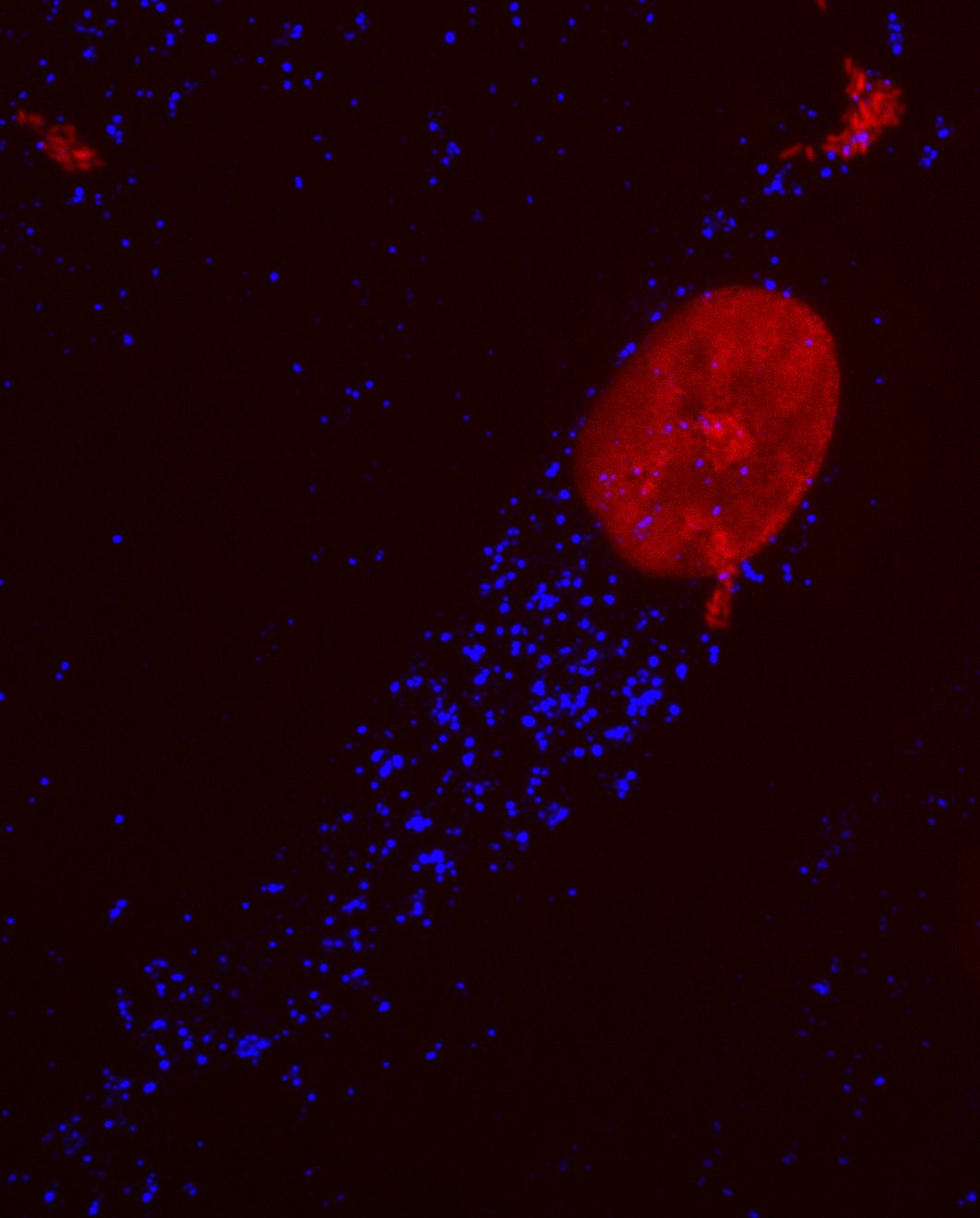 |

